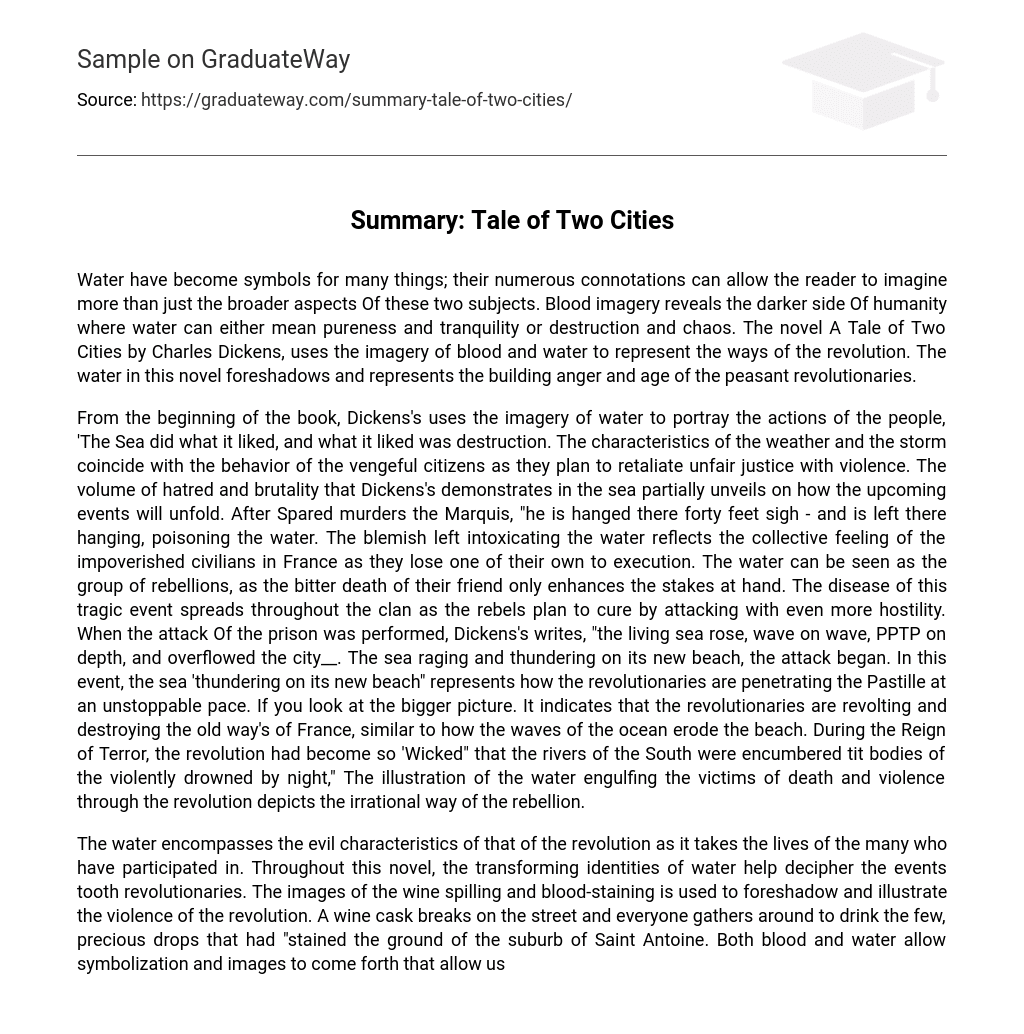Water and blood are powerful symbols that evoke various connotations and allow the reader to imagine beyond their literal meaning. In A Tale of Two Cities by Charles Dickens, the author employs imagery of blood and water to portray different aspects of humanity. Water represents both purity and tranquility as well as destruction and chaos, while blood imagery reveals the darker side of humanity. Throughout the novel, these elements symbolize the revolution and foreshadow the growing anger and maturity of the peasant revolutionaries.
Throughout the narrative, Dickens employs water imagery to depict the actions of the individuals. The sea, in particular, symbolizes destruction and a lack of control. This imagery is paralleled by the stormy weather and the citizens’ vengeful behavior as they plan to seek retribution through violence. The intensity of hatred and brutality that Dickens showcases in the sea hints at how future events will unfold. After Spared murders the Marquis, his hanging body poisons the water, serving as a reflection of the impoverished civilians’ collective resentment as they witness one of their own being executed. The water can be interpreted as a representation of the rebellious group, as the tragic death of their friend intensifies their determination to overthrow the oppressive regime. The tragic event spreads like a disease among the rebels, fueling their resolve to attack even more fiercely. As Dickens describes the attack on the prison, he depicts the sea rising relentlessly, overwhelming the city. This image signifies how the revolutionaries are forcefully infiltrating the Pastille at an unstoppable pace. Zooming out to observe the larger context, this portrayal implies that the revolutionaries are rebelling against and dismantling France’s old ways, much like how ocean waves erode a beach over time.The revolution during the Reign of Terror had reached such a wicked state that the rivers of the South were filled with the bodies of those violently drowned during the night. This illustration reveals the irrationality of the rebellion as it shows how victims of death and violence were engulfed by water.
Throughout the novel, water serves as a symbolic representation of the evil characteristics of the revolution, as it claims the lives of many participants. The transforming identities of water help interpret the events involving the revolutionaries. The imagery of wine spilling and blood staining foreshadows and illustrates the violence of the revolution. When a wine cask breaks on the street, people gather to drink the few precious drops that have stained the ground in the suburb of Saint Antoine. Both blood and water symbolize and produce images that enable us to envision the world and its near future. The tarnishing of the water and the staining of the blood exemplify how the revolution ultimately had no positive outcome. Despite their belief that they were doing what was right, the peasants’ hostility and hunger fueled their ambition and prevented them from achieving success.





